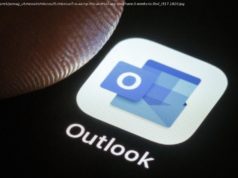Pokémon: Let’s Go, Pikachu! and Pokémon: Let’s Go, Eevee! were announced on Tuesday as the first Pokémon games for Nintendo Switch.
Pokémon: Let’s Go, Pikachu! and Pokémon: Let’s Go, Eevee! were announced as the first Pokémon games for Nintendo Switch. There’s been speculation about the Switch Pokémon titles for a while, and now with the official announcement, there’s even more buzz about the exact nature of the games.
We’ve played and reviewed the game, but if there’s still burning questions, here’s everything else we know about Pokémon: Let’s Go, Pikachu! and Pokémon: Let’s Go, Eevee!
Described by director Junichi Masuda as a remake of Pokémon Yellow, the first Pokémon titles for Switch will take us back to the Kanto region, where the original Pokémon games were set. Players will start off in Pallet Town, meet Professor Oak and encounter the 151 original Pokémon. In addition, elements of the Pokémon anime will appear, notably Team Rocket and specific characters.
Both versions of Pokémon: Let’s Go! will launch on Nov. 16, exclusively on Nintendo Switch. The games are available for pre-order on Amazon for $59.99 each .
Each game allows you to travel with the starter Pokémon in question, either Pikachu or Eevee.
Additionally, certain Pokémon will be version exclusive. So far we know that Oddish, Sandshrew and Growlithe will only appear in the wild in Let’s Go, Pikachu! while Bellsprout, Vulpix, and Meowth will only be in Let’s Go, Eevee!
Update (Sept. 10): A new trailer revealed that each version’s partner Pokémon will be equipped with different ways to travel: Pikachu has a surfboard that allows it to sail on the water, while Eevee can cut through those cumbersome small trees and also use a balloon contraption to fly. It seems that each partner will be able to learn all the HMs.
Each partner Pokémon also has a different “partner power,” as well as new moves exclusive to the Let’s Go! games. Pikachu’s is called Splishy Splash (which will be the second-ever Water-type move for Pikachu), and Eevee has a choice of Bouncy Bubble, Buzzy Buzz and Sizzly Slide — one move for each of the Eeveloution types in the first-gen games.
Update (Nov. 16): The full list of version exclusives is below.
Let’s Go, Pikachu! has:
Let’s Go, Eevee! has:
Additionally, Pikachu and Eevee can each learn different special moves, with Eevee having more options to boost its Normal type. It’s also easier to get a Pikachu in the Eevee version than it is to get an Eevee in the Pikachu version.
Currently, just the first generation of Pokémon will be available in the games, though their Alolan forms will also appear. Mewtwo has been confirmed to appear, but the status of the other Legandaries is unknown.
There will also be an all-new Pokémon appearing in both games.
Update (Aug. 9): Mega Evolutions of the three Kanto starters (Mega Venusaur, Mega Charizard X and Y and Mega Blastoise) are confirmed to return.
Update (Sept. 19): Moltres, Zapdos and Articuno are confirmed to be in the game.
Update (Sept. 25): The all-new Pokémon has been officially revealed! The mysterious new Pokémon first appeared in Pokémon Go, though it would turn into a Ditto right after players caught it. A new trailer for Let’s Go! revealed that this little guy is a steel type named Meltan. Professor Oak sends Professor Willow off to discover more of these new friends — perfect for transferring from Go to Let’s Go!
Your starter Eevee or Pikachu will not be able to evolve, but any Pokémon that you catch will. Keep in mind that since the game features first-generation Pokémon, the only available Eeveelutions will be Jolteon, Flareon and Vaporeon.
Update (Nov. 16): Unlike the original Kanto games — where after you picked one starter, unlocking the others was not easy — you can obtain all three throughout the course of the game. All three can be given to you by various NPCs, though you have to catch a certain amount of Pokémon to be eligible (30 for Bulbasaur; 50 for Charmander; 60 for Squirtle). Additionally, there’s also a chance to spot them in certain places in the wild (Viridian Forest for Bulbasaur; the Rock Tunnel for Charmander; routes 24 and 25 for Squirtle).
Like in the traditional games, you can have up to six Pokémon in your party (with more in your box). In addition to your partner Pokémon (Pikachu or Eevee) riding on your shoulders or hat, you can select any party Pokémon to walk behind you and interact with. All Pokémon will be to scale and you’ll be able to ride the larger ones, like Onix.
Update (11/15): You’ll always have your Pokémon box with you, making switching out your team easier than ever. Sending additional Pokémon in your box to Professor Oak rewards you with candies, which you can use to level up specific stats.
Players will be able to trade Pokémon from their Let’s Go! games and battle other players via local wireless and Wi-Fi. This requires two Nintendo Switch systems, as well as an active membership to the Nintendo Switch Online service, set to begin in September of this year. The Switch’s paid online service will have subscriptions for one month (US $4 / £3.49 / AU $6), three months (US $8 / £7 / AU $12), and 12 months (US $20 / £18 / AU $30). A family plan will also be available, allowing up to eight Nintendo account holders to share a single membership for $35 / £31.49 / AU $55.
While online trading and battles will be present in the Let’s Go! titles, there will not be any breeding or eggs.
You’ll be able to bond with your Pikachu or Eevee by playing, feeding, and petting them in the style of Pokémon Refresh from Sun and Moon and Pokémon Amie from X and Y. You’ll also be able to dress up your partner Pokémon in various outfits and even change its hairstyle.
Update (Nov. 15): Unlike with previous games, you’ll be able to change wild Pokémon’s natures by visiting a fortune teller NPC. The natures raise and lower stats and are a crucial part of competitive battling.
Update (Nov. 19): Dressing your trainer and your partner Pokémon requires navigating to the Clothing Trunk inside of your bag. From there, you can select outfits and accessories. You start off with a Sporty Outfit set for both you and your partner and as you travel through Kanto, you’ll encounter NPCs who will bequeath you some new threads.
Changing your partner’s hair requires playing in handheld mode. You’ll have to enter the Play menu and stroke the screen in various movements with varying amounts of fingers in order to get the desired hairstyle.
The biggest difference between the original games and Pokémon: Let’s Go! is the catching system. Unlike the usual turn-based battle mechanics from the older games, Let’s Go! has a catch system reminiscent of Pokémon Go, where the player will use the Joy-Con controller to “throw” the Poké Ball.
Additionally, wild Pokémon appear visibly, instead of surprising the player in the tall grass.
Regular fights between NPCs and other players, however, will have the same turn-based battle system of the regular games. There will be a variety of difficulty in the trainer battles, according to director Junichi Masuda.
There will also be a two-player co-op that will allow another player to join and assist in the Pokémon adventure by simply picking up the second Joy-Con controller. You can battle wild Pokémon, trainers, and take on gyms in co-op mode.
Second players can join as Support Trainers by waving a second controller at any time — even after a wild Pokémon encounter. Throwing the Poké Balls in sync at a wild Pokémon will increase the likelihood of catching it and increase the Exp. points earned.
Side events, where you can help people and Pokémon, will be present. A gameplay demo at the Nintendo Treehouse at E3 showed the player character watching an NPC’s Slowpoke in order to receive an item.
Wild Pokémon battles have been completely eliminated in favor of maneuvering the Joy-Con controller to “throw” Poké Balls. Players will be able to use the controller to try out different throwing techniques. Earlier on in the game, the Pokémon won’t move around as much, but as the game advances they will be harder to catch. Like in Pokémon Go, berries can be used to soothe a wild Pokémon.
As mentioned before, wild Pokémon will now be visible on the screen. Some will have different auras around them, indicating that there is something special about the particular Pokémon. For instance, a blue aura means the Pokémon is smaller than average, while a red one means it is bigger.
If you switch to handheld mode, the catching mechanism changes. Instead of using the Joy-Cons as motion controllers, you must press a button and then move the entire Switch as a controller to line up onscreen elements.






